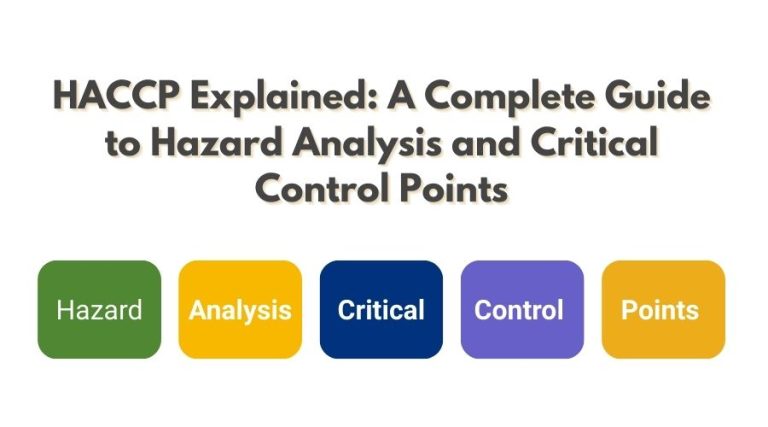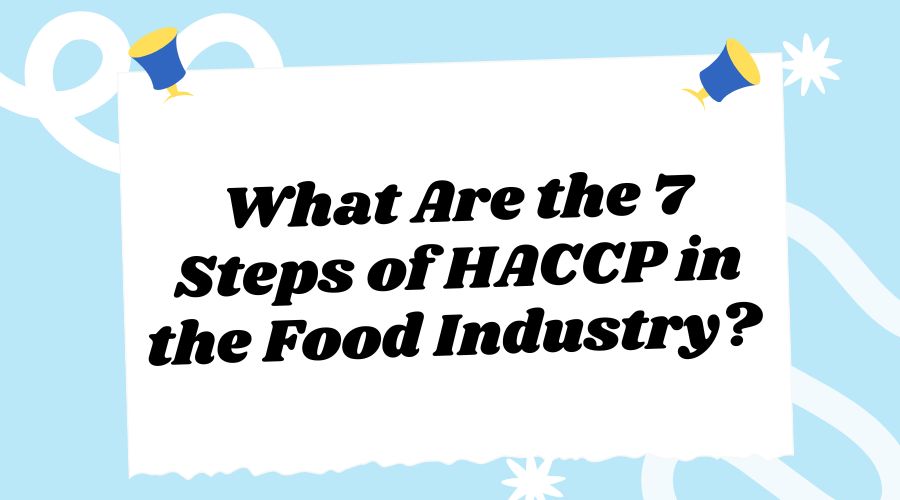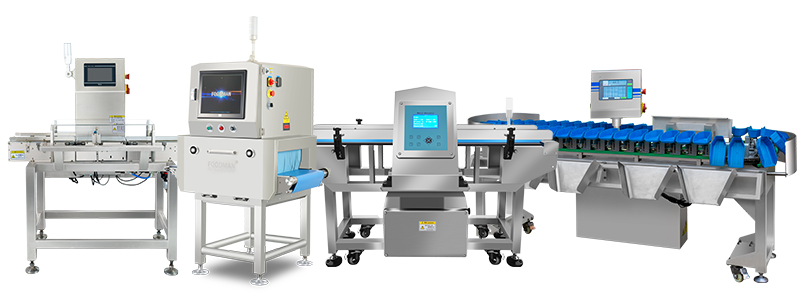Introduction: Why HACCP Is the Backbone of Food Safety
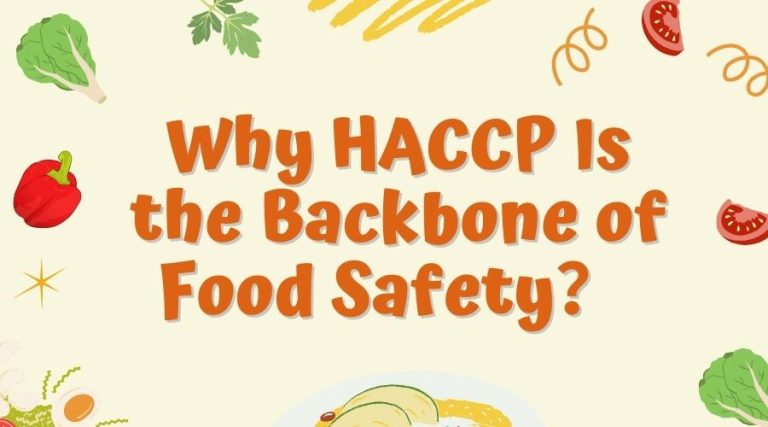
You don’t usually think about the system of checks and balances that exists behind the safety of the food you eat when you sit down for a meal. But behind each packaged product, restaurant entree, and supermarket bagging there is a careful process known as HACCP.
You must have heard of HACCP previously and asked yourself: what is HACCP, what does the term HACCP stand for, or even what is HACCP in food industry language? To some, it might feel like just another technical regulation, but actually, hazard analysis critical control point HACCP food safety is the cause our contemporary food system works without continual outbreaks and recalls.
This guide serves as a complete resource—a synthesis of what Easyweigh has already covered in:
What Are the 7 Steps of HACCP in the Food Industry?
What is HACCP and How to Meet the Standards?
What is Critical Control Point in HACCP?
By combining those insights, we’ll build a clear and structured explanation of HACCP, covering everything from definitions and critical control points to the seven steps and practical applications.
What Does HACCP Mean?
The question what does HACCP mean comes up a lot, so let’s make it simple. HACCP stands for Hazard Analysis and Critical Control Points.
It is a preventive system, not a reactive one. Instead of waiting to test the final product, HACCP looks at the entire food process—from farm to fork—and identifies where things could go wrong. Once hazards are spotted, businesses set up HACCP control points and HACCP critical limits to ensure the risks are minimized or eliminated.
So, when someone asks what is HACCP definition or what is a HACCP, the answer is:
It’s an internationally recognized method for protecting food safety through hazard analysis and preventive control.
Why HACCP Matters in the Food Industry
Food safety failures can ruin lives and businesses. Think of salmonella in peanut butter, E. coli in spinach, or listeria in frozen vegetables. Each case damaged consumer confidence, caused recalls worth millions, and in some cases, led to severe illness or death.
What is HACCP in food industry? It’s the industry’s armor against such disasters. With hazard analysis critical control point HACCP, risks are handled before they can harm consumers. That’s why many governments require a documented HACCP plan for food producers, processors, and even caterers.
And beyond compliance, HACCP protects reputation. Once a brand loses trust due to a food safety scandal, recovery is slow, expensive, and sometimes impossible.
What Is a HACCP Plan?
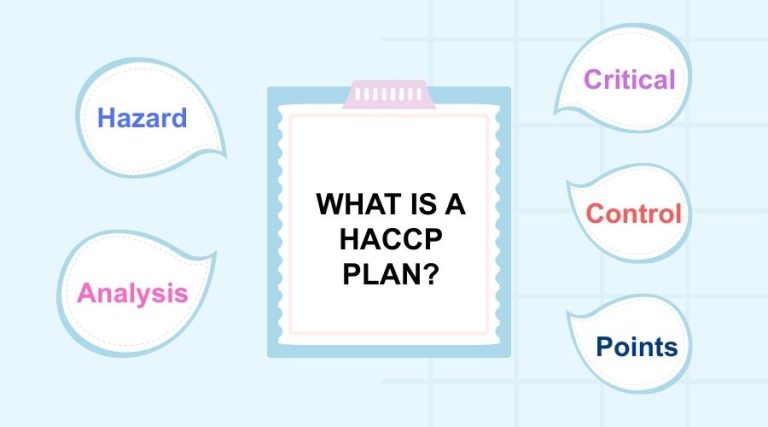
If you’ve ever asked yourself what is a HACCP plan, think of it less like a dry technical document and more like a living safety manual for food. It’s not something that sits on a shelf collecting dust—it’s the everyday guide that staff rely on to keep food safe.
Essentially, a HACCP plan maps where it is possible to do wrong and how not to. It lays out the specific HACCP points (critical control points) in your business, establishes the HACCP critical limits that should never be crossed, and spells out the exact thing to do if something strays from the course. But there is more. The plan also explains how HACCP monitoring systems will be performed—who is responsible for monitoring the refrigerator temperatures, how often the cooking times are documented, and what evidence needs to be documented.
Picture it as a recipe card, except instead of teaching you how to bake a cake, it teaches your workers how to supply food consistently safe. Without it, even the best of intentions can collapse into anarchy. With it, every worker, from prep cook to manager, knows exactly what role they have in protecting the customer and the firm.
The 7 Steps of HACCP
In one of our earlier blogs, we explored the 7 steps of HACCP in detail. Here, let’s summarize them as the backbone of the system:
Conduct a hazard analysis → Identify biological, chemical, and physical hazards.
Determine the critical control points (CCPs) → Pinpoint where hazards can be prevented or reduced.
Establish critical limits → Define the safe boundaries (temperature, pH, storage time).
Set up monitoring systems → Check regularly to ensure CCPs remain under control.
Plan corrective actions → Decide what to do if limits are not met.
Verify the system → Confirm that the plan works through reviews, testing, and calibration.
Keep records → Document everything to prove compliance and track consistency.
Each step is essential. Miss one, and the entire system becomes vulnerable.
👉 To dive deeper into each step, read our full article: What Are the 7 Steps of HACCP in the Food Industry?
What Are the 7 Steps of HACCP in the Food Industry?
Discover the 7 steps of HACCP in the food industry. Learn how Hazard Analysis Critical Control Points ensure food safety, quality, and compliance.
What Are HACCP Critical Control Points?
Another piece of the puzzle is understanding what are HACCP critical control points.
A critical control point (CCP) is a stage in food production where a hazard can be controlled, prevented, or reduced to safe levels. Think of it as a checkpoint that makes or breaks safety.
Examples include:
Cooking chicken thoroughly (kills bacteria).
X-ray machine detects metallic and non-metallic foreign objects
A vision inspection machine verifies whether the tablet packaging is intact and undamaged.
Filtering water (removes contaminants).
Not every step in food production is a CCP. For example, unloading raw materials might involve risks, but if those risks can be handled later, it may not qualify as critical. Identifying true CCPs is therefore vital.
👉 For a dedicated breakdown, see our blog: What is Critical Control Point in HACCP?
.
Monitoring Systems and Critical Limits
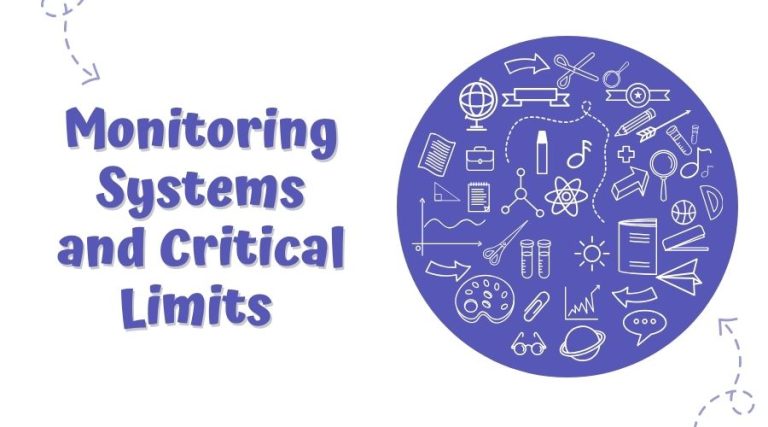
Two terms often confuse newcomers: monitoring systems HACCP and HACCP critical limits.
Monitoring systems HACCP: These are the methods used to keep track of CCPs. For example, checking oven temperatures with a probe or logging refrigerator readings. Monitoring ensures problems are spotted before they become disasters.
HACCP critical limits: These are the measurable safety thresholds at each CCP. For instance, ground beef must reach 160°F, or seafood must be stored below 40°F. Critical limits are based on scientific data, regulations, and industry best practices.
When monitoring shows a breach of critical limits, corrective action must happen immediately.
Corrective Actions and Verification
If a hazard critical control point HACCP system detects a breach, corrective actions kick in. This might mean reheating a dish, discarding a contaminated batch, or fixing broken equipment. The goal is always the same: unsafe food must never reach consumers.
Verification, meanwhile, ensures the entire HACCP system works as intended. This can involve calibrating equipment, auditing records, or running microbial tests. Think of it as double-checking that the safety net is intact.
Record-Keeping: The Unsung Hero of HACCP
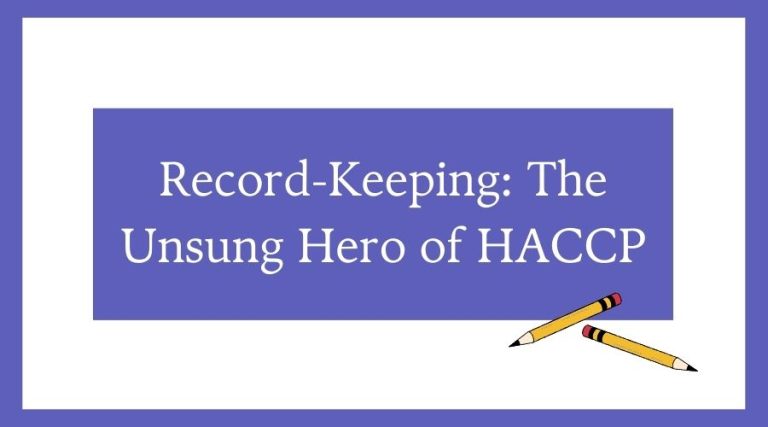
Documentation may sound boring, but in HACCP, it’s everything. Inspectors, auditors, and even courts rely on records as proof of compliance. Without them, it’s impossible to prove you followed your HACCP plan.
From monitoring logs to corrective action reports, good record-keeping protects both businesses and consumers. It also helps managers identify patterns and make continuous improvements.
HACCP in Action: A Real-World Scenario
Let’s imagine you own a seafood restaurant.
Hazards: Vibrio bacteria in raw oysters, cleaning chemical residues on prep tables, plastic fragments from packaging.
CCPs: Storing seafood at safe temperatures, washing prep tables correctly, and inspecting packaging.
Critical Limits: Seafood below 40°F, chemical dilution ratios within safe ranges, packaging materials intact.
Monitoring: Staff check fridge temperatures and log cleaning routines.
Corrective Actions: Discard seafood if stored above the limit, rewash tables, reject faulty packaging.
Verification: Weekly manager reviews, thermometer calibration, and random microbial testing.
Records: Logs and reports filed daily.
This is how a HACCP safety food system works in practice. It’s detailed, it’s preventive, and it’s non-negotiable.
Meeting HACCP Standards
In our earlier post What is HACCP and How to Meet the Standards?
, we highlighted that simply knowing the principles isn’t enough. Meeting standards requires training, discipline, and culture.
Every staff member—from line cooks to managers—must understand what are HACCP and their role in the plan. It’s not just paperwork; it’s daily practice. Businesses that embed HACCP into their culture not only comply with the law but also build trust and resilience.
Conclusion: HACCP as the Pillar of Trust in Food Safety
So, when someone asks you what’s HACCP, what is HACCP plan, or what does HACCP mean, you can confidently explain:
It’s a system of hazard analysis critical control point HACCP practices that protect food safety by identifying risks, controlling them at key stages, and proving compliance through monitoring and records.
By combining the 7 steps of HACCP, the clarity of HACCP critical control points, and the discipline of strong record-keeping, food businesses create not just safer products—but safer reputations.
At the end of the day, HACCP safety food is not about bureaucracy. It’s about the human right to eat without fear. It’s about protecting trust, health, and life itself.
FAQs
What is a HACCP plan?
A HACCP plan is the written record that sets out how a food business manages hazards. It includes the HACCP points that have been identified, the monitoring systems that HACCP relies on, and corrective action if it fails.
What are HACCP critical control points (CCPs)?
HACCP critical control points are the exact stages of manufacturing when hazards may be avoided or removed. Examples include cooking meat to the correct temperature or storing seafood at the correct chill temperatures.
Does HACCP necessarily have to be done by law?
Yes, within most countries. Food companies are generally compelled by regulatory bodies to implement a hazard analysis critical control point HACCP plan in order to comply with food safety regulations.

